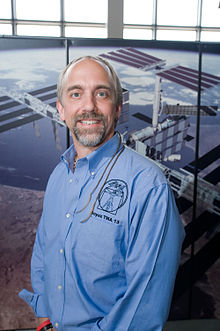User:TeonEdwards

Windows on Earth is a museum exhibit, Web site, and exploration tool that enables the public to explore an interactive, virtual view of Earth from space.[1]
The Windows on Earth digital system uses state-of-the-art technologies to simulate the view of Earth as if from a window of the International Space Station. Visitors to a museum and users of the Web site see Earth in high-resolution, photo-realistic color and 3-D, passing by under them. They can explore where they wish, with sites of interest marked in many locations around the world, including animations of how various features were formed. The system includes clouds, night lights, and other data to make the experience as realistic and interactive as possible.
Earth Visualization Software[edit]
Windows on Earth uses the astronaut metaphor, providing interactive photorealistic views of Earth as if from an orbital altitude of 360 km. It uses GeoFusion's digital Earth engine, somewhat akin to Google Earth, that enables a high level of user interactivity, letting people fly where they wish, zoom in and out, and turn on and off various data layers. The system includes Earth imagery at 30m, derived from Landsat. It also uses a 90m Digital Elevation Model to present features in 3D relief in the oblique perspective views. The images were color-corrected with advice from former NASA astronaut Jay Apt to match Earth colors perceived by the astronauts. The data system also includes real-time clouds (updated daily) and calculated day/night transitions (using night light imagery from DMSP).
Development and Outreach Partners[edit]
Windows on Earth was created by people from the Center for Earth and Space Science (CESSE) at TERC, a not-for profit math and science education company located in Cambridge, MA, in partnership with the Association of Space Explorers, GeoFusion, and WorldSat and with funding from the National Science Foundation, Informal Science Education.[2]
Additional partners include the Challenger Learning Center and the NASA Johnson Spaceflight Center. [3]
Museums[edit]
The Windows on Earth museum exhibit can be found in the National Air and Space Museum, Boston's Museum of Science, the Montshire Museum of Science in Vermont, and the St. Louis Science Center.
Garriott Mission[edit]

Windows on Earth will soon be flying onboard the International Space Station! On October 12, 2008, Richard Garriott is scheduled to launch on a Russian Soyuz to the ISS."Former Astronaut's Son Signs on as Next Space Tourist". SPACE.com. Retrieved October 9, 2007.</ref>[4] He will remain onboard for 10 days, conducting educational and scientific programs and experiments. Earth observation is one of his prime tasks on this mission, and he will use the Windows on Earth system to help him take pictures of specific targets.[5][6]
After the mission, Richard's photographs, along with ones taken by his astronaut father Owen Garriott, who flew on Skylab 3 (1973) and STS-9 (1983), will be available to the public through Windows on Earth. This provides a unique opportunity for comparing areas of Earth photographed by two generations of space explorers, showing how Earth’s surface (and the technology of Earth observation) have changed over 35 years, from 1973 to 2008.
Notes and References[edit]
- ^ "Windows on Earth".
- ^ "TERC Windows on Earth page".
- ^ "Challenger Center Partners with TERC's Windows on Earth Program". SpaceRef.com. Retrieved October 3, 2008.
- ^ "Space Adventures: Richard in Space".
- ^ "WBZ: Visiting Space Without Leaving Earth". WBZ. Retrieved October 3, 2008.
- ^ "Windows on Earth".
